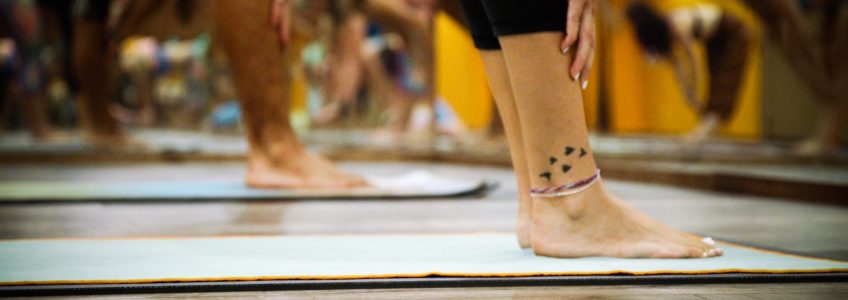
Joining a group exercise class can be intimidating. There are often regulars there who know each other, the class and the instructor, and it can be scary to try to ‘break in’ to that group, especially if you have limitations that require adjustments.
But it’s well worth overcoming that initial hurdle – group classes are fun, you meet new people, and the scheduled time helps you plan so that you have the time and energy to exercise. So here are a few tips to help you get started:
- Do some research and ask about what classes might suit you.
It’s well worth doing some research before you pick which class(es) you want to do. Your research might not tell you exactly what moves you’ll be doing, but it should give you an idea of difficulty, speed and intensity. You can do this in several ways:
- Most gyms and centres will have printed or displayed somewhere a list of the classes they offer and their descriptions. This might be in a leaflet, on a display board or on their website. Have a read through and select some classes that sound like they might suit you.
- You can also ask staff if they can advise you on what classes might be suitable and which might be best avoided.
- Do some internet searching, particularly of branded classes. Classes run by brands such as Les Mills (e.g. BodyPump, BodyBalance, BodyCombat etc.), Beach Body (e.g. Insanity) and David Lloyd (e.g. Blaze) will all have sites dedicated to explaining the classes. You’ll be able to watch video introductions to get a feel for the class, and you’ll often find reviews that will help you decide if the class is for you or not.
- Get there early to talk to the instructor.
This is a really key step. An instructor or class leader can’t help you be safe and get the most out of the class if they don’t know you need help. It’s a great idea to turn up 5-10 minutes early (they’ll likely be there early too to set up), giving you the time to speak to them about your limitations, ask for adaptations, get advice etc. That way when they ask at the start of the class “does anyone have any injuries or illnesses I need to know about” you don’t have to put up your hand and explain in front of the class.
Bear in mind that your instructor doesn’t need your full medical history, and you should keep medical jargon to a minimum, as they aren’t medically trained. So for example if you have postural tachycardia syndrome, you might say you have issues regulating your blood pressure so swift changes in position (e.g. burpees) will be a problem. That way they can advise on alternative moves for you to keep you safe. You can also let them know what to do if you run into trouble, e.g. identify that you have a medical bracelet, or that you may sit or lie down if you are feeling unwell and what they should do.
- Don’t be afraid to make adjustments or follow ‘lower level’ options to suit you.
In lots of classes, instructors will give an initial move, followed by a ‘lower level’ option and a ‘higher level’ option (potentially also a ‘pregnancy option’). This allows all participants to work at a level that suits their abilities. Whilst it’s tempting to want to ‘go heavy’ on the weights or try a tougher pose, don’t be afraid to take the option that suits you – your safety and the effectiveness of your workout are the most important thing for you. And it does end up being too easy, then there’s always next time!
- Build up to a full class if you need to.
There’s nothing saying you have to stay for a full class! While you can’t join late (you’ll have missed the warm up), you can leave early. In fact Les Mills often recommends that you start with the first 4 tracks of music, and add another one on each time you go until you get to a full class.
As long as you don’t adversely disrupt the class, you let the instructor know of your plan so they know you’re OK, and you clear up after yourself (e.g. putting mats and weights away) as best you can, there is absolutely no problem leaving a class before the end.
- Listen to your body and remember that this class is for you.
Last but certainly not least, remember to listen to your body. Getting the balance right between pushing yourself and not over-doing it is something that takes practice, and it will change day-to-day, especially if your health is changeable too. What options you take, how hard you work and even the length of your workout is up to you, and some days you’ll realise working out at all isn’t a good idea. That’s OK! Everyone is on their own journey. Remember: you’re in that class for you, not for anyone else.

